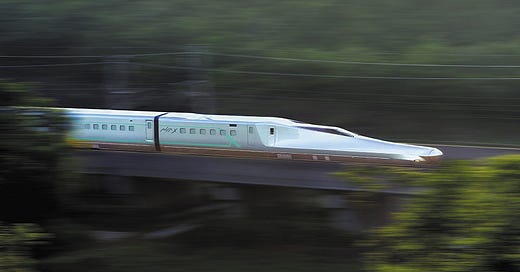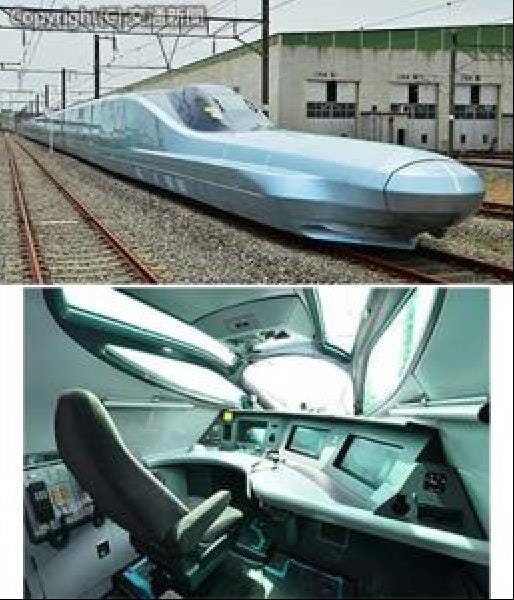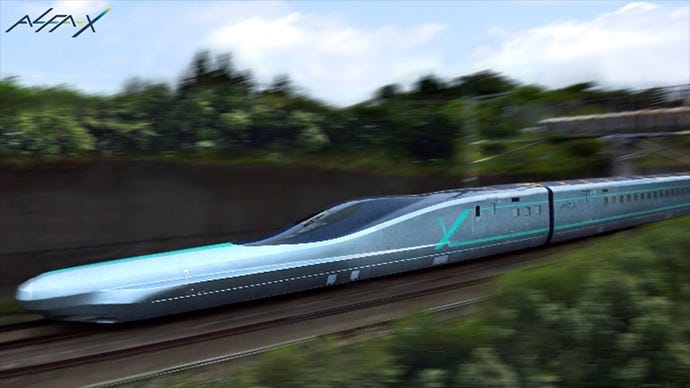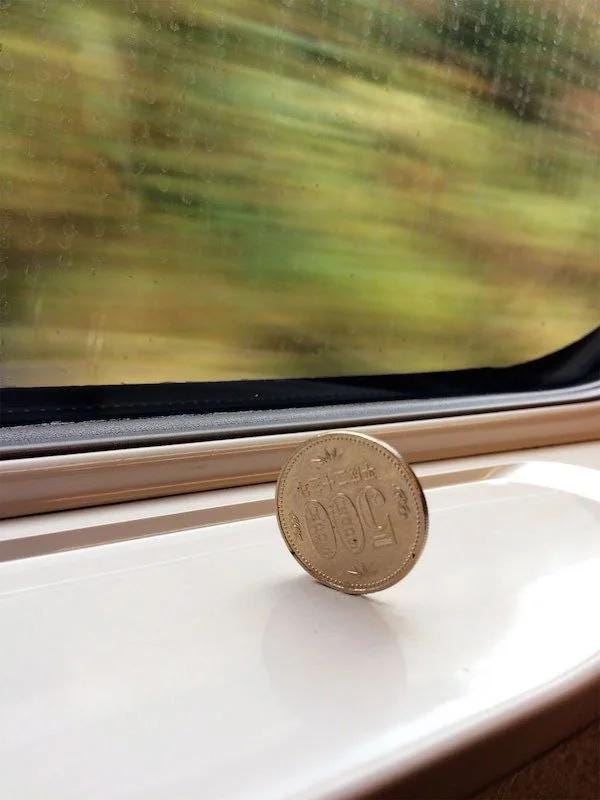Recently, a lot of other countries have caught up with Japan on making high-speed tracks (looking at you, China) with record-breaking speeds and flashy new lines.
But Japan’s ALFA-X (Advanced Labs for Frontline Activity in rail eXperiment) just might be the ultimate way of saying, “We still got it.”
This train doesn’t just travel fast, it looks freaking fast. The train’s lance-shaped nose stretches up to 22 meters, ready to pierce the wind at nearly 400 km/h in testing. If there’s ever been a mechanical beast that commands respect the moment you lay eyes on it, this is it.
That pointed nose is more than a pretty face: It’s a marvel of aerodynamic engineering aimed at keeping noise down and pressure waves gentle, especially when blasting through tunnels. For those of us who love eye-catching design, it also makes the ALFA-X look downright intimidating, and I mean that in the best possible way.
Beyond the exterior flair, ALFA-X boasts advanced tech under the hood. Its active suspension and braking systems work overtime to ensure that you don’t spill your coffee even when it’s hurtling through the countryside. High-speed sensors relay constant feedback to keep every car stable, smooth, and ready to roll, no matter how fast it goes.
It is said that you'll be able to balance a coin on its side even when ALFA-X is driving at full speed!
Feasibility vs. Maglev
Now, given how much buzz surrounds Maglev trains (those levetating trains that can reach speeds of up to 600km/h) these days, you might wonder why Japan hasn’t gone all-in on floating rail.
In simple terms, Maglev lines demand a whole new infrastructure which doesn’t come cheap or easy. ALFA-X, by contrast, builds on the existing Shinkansen network.
It’s like tuning up your favorite supercar rather than designing a brand-new racetrack from scratch. That’s why this route is way more feasible, especially for a country that already perfected the bullet train concept decades ago.
Not all sunshine and rainbows
Still, pushing a train to these sorts of speeds can raise some eyebrows. For starters, it requires significant upgrades to rails, signals, and safety systems, an expensive undertaking that will likely drive up ticket prices. Noise pollution can also be a concern, despite the aerodynamic wizardry. And while the ALFA-X is loaded with cutting-edge safety tech, operating at such high speeds means any slip-up could become a serious event.
These challenges aren’t insurmountable, but they’re definitely part of the conversation about the future of high-speed rail. As most countries don't even have “normal” high speed trains yet, trains at these speeds will likely be few and far between for many decades to come…
Mark your calendar
If you’re eager to ride this metallic beauty, you’ll have to wait until the early 2030s, when ALFA-X is slated to officially hit the tracks, likely just in time for new Shinkansen expansions reaching up toward Sapporo!
So keep an eye on that Japan itinerary. Because once this train is unleashed, it’s set to blow the competition out of the water, and it’ll do it with style, grace, and a little bit of that Japanese bullet-train bravado we’ve come to love.







